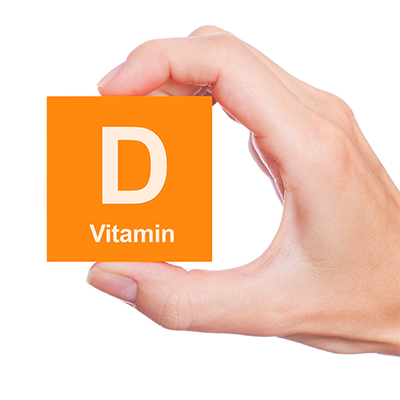English Version Below
วิตามินดีช่วยลดภาวะอักเสบ
อินเตอร์ลูคิน-6 (Interleukin-6: IL-6) สารตัวนี้หลั่งออกมาจากเม็ดเลือดขาว เป็นการตอบสนองต่อภาวะการอักเสบของร่างกาย พบความเกี่ยวข้องระหว่างสารตัวนี้สูงกับโรคหลายโรค โดยเฉพาะ โรคมะเร็ง และในผู้ที่มีน้ำหนักเกิน ก็จะพบสารอักเสบตัวนี้สูงด้วยเช่นกัน
ได้มีการศึกษาทดลอง เรื่องการลดสารอักเสบIL-6 โดยการรับประทานวิตามินดีในผู้ที่มีน้ำหนักเกิน โดยทำการศึกษาในผู้หญิงอ้วนวัยทอง จำนวน 218 คน โดยแบ่งเป็น 2 กลุ่ม กลุมแรกได้รับการลดน้ำหนัก บวกกับการรับประทานยาหลอก กลุ่มที่สอง ได้รับการลดน้ำหนัก บวกกับการรับประทานวิตามินดี 2000 IU ทุกวัน ผลที่ได้คือ ทั้งสองกลุ่มมีน้ำหนักที่ลดลง 5% – 10% เช่นเดียวกัน แต่การตรวจหาสารอักเสบIL-6 พบว่า กลุ่มที่รับประทานวิตามินดี มีค่าการอักเสบIL-6 ในร่างกายลดลงมากถึง37.3% ในขณะที่กลุ่มได้รับยาหลอก มีค่าการอักเสบIL-6 ลดลงเพียง 17.2%
วิตามินดีช่วยลดอาการทางจิต
การศึกษาพบว่า วิตามินดีมีบทบาทสำคัญต่อการตั้งครรภ์ ซึ่งสามารถช่วยป้องกันการเกิดโรคทางจิต เช่น โรคสมาธิสั้น(ADHD) และโรคจิตเภท (Schizophrenia)
ตัวรับวิตามินดีเกิดขึ้นในก้านสองของตัวอ่อนทารกในระหว่างตั้งครรภ์ของหนู จึงเป็นข้อบ่งชี้ว่า วิตามินดีมีความสำคัญต่อพัฒนาการการเจริญเติบโตของทารกในครรภ์ และพบว่า เมื่อหญิงตั้งครรภ์ที่ขาดวิตามินดี จะทำให้เกิดการเจริญเติบโตของทารกช้า
โรคสมาธิสั้น (Attention Deficit Hyperactive Disorder: ADHD) ได้ทำการศึกษาระดับวิตามินดีในหญิงตั้งครรภ์ จำนวน 1,650 คน พบว่า หญิงตั้งครรภ์ที่มีระดับวิตามินดีสูงขึ้นทุกๆ 10 ng/mL มีความเสี่ยงต่อการให้กำเนิดบุตรที่มีภาวะสามาธิสั้นน้อยกว่า 11% แต่อย่างไรก็ตาม การรับวิตามินดีในปริมาณสูงที่เพียงพอในระดับที่ต้องการ ควรอยู่ในความดูแลของแพทย์
โรคจิตเภท (Schizophrenia) คือ กลุ่มอาการของโรคที่มีความผิดปกติของความคิด ทำให้ผู้ป่วยมีความคิดและการรับรู้ไม่ตรงกับความเป็นจริง เชื่อว่าเกิดจากความไม่สมดุลของสารเคมีในสมอง สารเคมีนี้คือ โดปามีน(dopamine) ได้มีการศึกษาในหนู พบว่า ตัวรับวิตามินดีในก้านสมองของระยะตัวอ่อนในครรภ์ มีความเกี่ยวข้องกับการเพิ่มสูงขึ้นของโดปามีน ซึ่งสรุปได้ว่า ภาวะขาดวิตามินดีส่งผลทำให้เกิดความเสี่ยงต่อการเป็นโรคจิตเภท
อีกการศึกษาหนึ่ง ได้ทำการศึกษาระดับวิตามินดีในกลุ่มทดลอง 3 กลุ่ม ดังนี้ กลุ่มที่หนึ่ง จำนวน 40 คน เป็นโรคจิตเภทในระยะอาการกำเริบ กลุ่มที่สอง จำนวน 41 คน เป็นโรคจิตเภทในระยะอาการสงบ และกลุ่มที่สาม จำนวน 40 คน เป็นผู้มีสุขภาพดี ผลการตรวจค่าวิตามินดี พบว่า กลุ่มผู้เป็นโรคจิตเภทในระยะอาการกำเริบ มีค่าวิตามินดีอยู่ในระดับต่ำมาก เมื่อเทียบกับกลุ่มโรคจิตเภทในระยะอาการสงบ และกลุ่มผู้มีสุขภาพดี มีค่าระดับวิตามินดีสูงที่สุด
โดยสรุปแล้ว เรารู้จักมาเป็นสิบๆปีแล้วว่า วิตามินดีช่วยให้กระดูกและฟันแข็งแรง และรับรู้ภายหลังว่าวิตามินดีมีส่วนสำคัญต่อทุกส่วนของร่างกาย และสามารถป้องกันการเกิดโรคจากความเสื่อมทั้งหลาย เช่น โรคเบาหวาน โรคหัวใจ โรคหลอดเลือสมอง เป็นต้น แต่ทุกวันนี้กลับพบว่า ผู้คนส่วนใหญ่ได้รับวิตามินดีไม่เพียงพอ สาเหตุอาจมาจาก อาหารเสริมหรือวิตามินที่วางขายตามท้องตลาดทั่วไป มีวิตามินดีในปริมาณน้อย ประมาณ 400-600 IU เท่านั้น หรือประชากรที่อาศัยอยู่ในประเทศหนาวที่ได้รับแสงแดดน้อย ก็จะทำให้ขาดวิตามินดีได้ด้วยเช่นกัน ซึ่งจริงๆแล้ว วิตามินดีเป็นวิตามินที่มีราคาไม่แพงมากนัก และยังสามารถช่วยป้องกันโรคได้ จึงเป็นวิตามินที่ทุกคนควรจะได้รับอย่างเพียงพอ ปริมาณที่แนะนำต่อวัน คือ Vitamin D3 5,000-8,000 IU และควรรับประทานพร้อมอาหารเพื่อเพิ่มการดูดซึม และควรตรวจเลือดประจำปีเพื่อหาระดับวิตามินดีว่าเพียงพอต่อร่างกายหรือไม่

Vitamin D Lowers Inflammatory Biomarkers
Interleukin-6 (IL-6) is an inflammatory cytokine. At high levels, this cytokine has been linked with several types of
cancers.41 Overweight individuals have much higher rates of inflammatory cytokines like interleukin-6.42
A compelling study documented marked reductions of interleukin-6 when vitamin D is combined with weight loss. The
study involved 218 overweight postmenopausal women who were divided into two groups. Both groups had weight loss
interventions, but one group was given 2,000 IU per day of oral vitamin D3.
Both groups achieved a 5% to 10% weight loss, but the group that received the vitamin D supplement showed an
impressive 37.3% reduction in interleukin-6 levels compared to the placebo which only had a 17.2% reduction.43
Psychiatric Disorders
Interesting research is showing higher levels of vitamin D play an important role during pregnancy for preventing many
different psychiatric disorders. The vitamin D receptor emerges in the brain stem through the embryonic development of rats. This indicates and reinforces the idea that vitamin D is important for gestational development.46,47 Additional studies have shown that vitamin D deficiency in the mother can lead to impaired growth of the fetus.48
Attention Deficit Hyperactive Disorder (ADHD)
A fascinating study analyzing vitamin D blood levels in 1,650 mothers showed that for each 10 ng/mL increment in vitamin
D levels, their children had 11% less ADHD-like symptoms. This type of research has heavily influenced the demand for prenatal vitamins. However, most multivitamins only contain a fraction of the vitamin D that is needed to be therapeutic. The trivial amount of vitamin D in most prenatal vitamins is not enough to raise a vitamin D level by 10 ng/mL.1,2
Schizophrenia
An imbalance of dopamine has been hypothesized to be a cause of schizophrenia. The vitamin D receptor emerges in the
brain stem at the same time as the peak period of dopamine cell birth in rat embryos. There has been a high correlation between vitamin D deficiency and schizophrenia. The correlation has influenced a study to show if vitamin D deficiency was prevalent in those having an acute episode.
The study subjects were divided into three groups: 40 patients who were reported to be having an acute episode, 41 patients
in remission, and 40 healthy controls. Those who reported to be having an onset of schizophrenic episodes had far lower levels of vitamin D compared to schizophrenics in remission. The healthy controls had the highest levels of vitamin D.
Ignored Age-Related Panacea
Life Extension® has been writing about the health benefits of vitamin D for many decades. Fortunately, researchers are
finally catching up with these findings and devoting resources to discovering and documenting new applications of vitamin
D. What might be surprising is that the new research discussed in this article was released just within this last year.
There is an immense archive of literature documenting the health benefits of this single vitamin. Every day, more research
findings are being published. In fact, by the time this article is published, there will be even more noteworthy studies
released.
Current medical teachings need to be updated to include evidence that vitamin D provides support to not just bone health,
but also to reducing all-cause mortality through its system-wide benefits. Vitamin D is the only vitamin that has receptors
for it located on every cell. With the cumulative and consistent evidence backing its efficacy, this vitamin should be an
essential part of everyone’s daily health regimen.
The cost of conventional treatment for age-related diseases is staggering and Medicare is on the hook for a huge unfunded
liability. People today have an unprecedented opportunity to reduce their risk of needing conventional treatment using a low-cost
vitamin supplement. The typical dose range is 5,000 to 8,000 IU of vitamin D3 daily taken with a meal for better absorption.
Annual blood tests can enable one to know if they are taking the proper dose of vitamin D they need to achieve optimal
levels of 25-hydroxyvitamin D.
Summary
While the use of vitamin D has increased dramatically, levels in common commercial multivitamins (400 to 600 IUs) are still
far too low to provide real-world benefits. Extensive research has demonstrated that higher vitamin D blood levels are associated with reduced mortality risk and specific diseases such as diabetes, stroke, and multiple sclerosis, along with other autoimmune diseases and psychological disorders. Vitamin D dosing in the range of 5,000 to 8,000 IU each day should be taken with a meal for better absorption.
ข้อมูลจาก: Life Extension Magazine January 2016
ขอขอบคุณผู้แปล: คุณวิลาสินี บุดดาคะ


